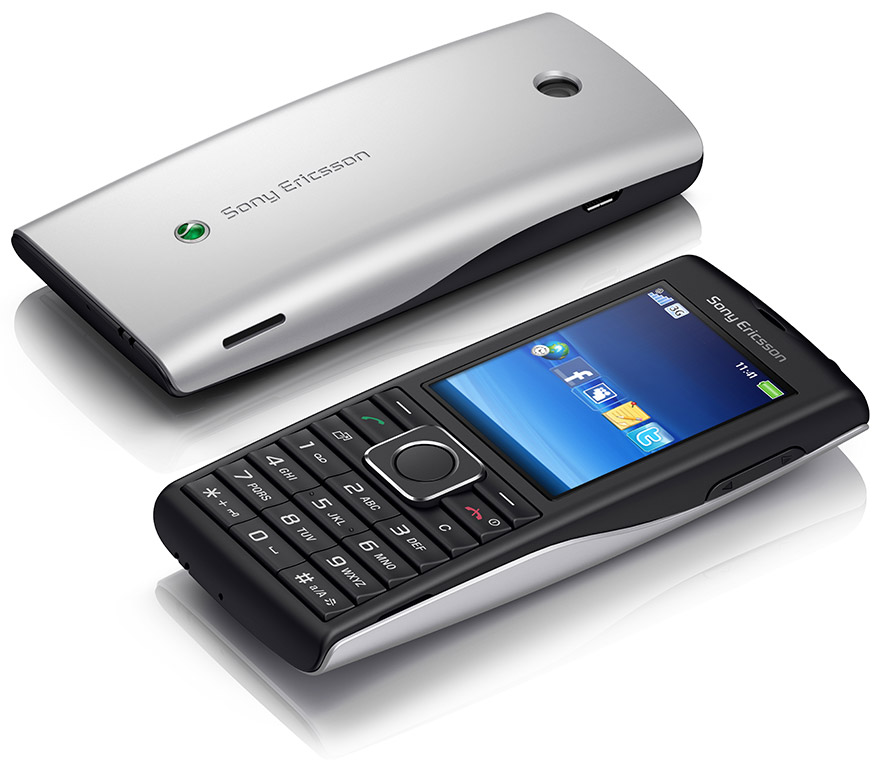Primary Contributor: Joyce Tyldesley
Cleopatra, (Greek: “Famous in Her Father”) in full Cleopatra VII Thea Philopator (“Cleopatra the Father-Loving Goddess”) (born 70/69 bc—died August of 30 bc, Alexandria), Egyptian queen, famous in history and drama as the lover of Julius Caesar and later the wife of Mark Antony. She became queen on the death of her father, Ptolemy XII, in 51 bc and ruled successively with her two brothers Ptolemy XIII (51–47) and Ptolemy XIV (47–44) and her son Ptolemy XV Caesar (44–30). After the Roman armies of Octavian (the future emperor Augustus) defeated their combined forces, Antony and Cleopatra committed suicide, and Egypt fell under Roman domination. Cleopatra actively influenced Roman politics at a crucial period, and she came to represent, as did no other woman of antiquity, the prototype of the romantic femme fatale.
Life and reign
Daughter of King Ptolemy XII Auletes, Cleopatra was destined to become the last queen of the Macedonian dynasty that ruled Egypt between the death of Alexander the Great in 323 bc and its annexation by Rome in 30 bc. The line had been founded by Alexander’s general Ptolemy, who became King Ptolemy I Soter of Egypt. Cleopatra was of Macedonian descent and had little, if any, Egyptian blood, although the Classical author Plutarch wrote that she alone of her house took the trouble to learn Egyptian and, for political reasons, styled herself as the new Isis, a title that distinguished her from the earlier Ptolemaic queen Cleopatra III, who had also claimed to be the living embodiment of the goddess Isis. Coin portraits of Cleopatra show a countenance alive rather than beautiful, with a sensitive mouth, firm chin, liquid eyes, broad forehead, and prominent nose. When Ptolemy XII died in 51 bc, the throne passed to his young son, Ptolemy XIII, and daughter, Cleopatra VII. It is likely, but not proven, that the two married soon after their father’s death. The 18-year-old Cleopatra, older than her brother by about eight years, became the dominant ruler. Evidence shows that the first decree in which Ptolemy’s name precedes Cleopatra’s was in October of 50 bc. Soon after, Cleopatra was forced to flee Egypt for Syria, where she raised an army and in 48 bc returned to face her brother at Pelusium, on Egypt’s eastern border. The murder of the Roman general Pompey, who had sought refuge from Ptolemy XIII at Pelusium, and the arrival of Julius Caesar brought temporary peace.
Cleopatra realized that she needed Roman support, or, more specifically, Caesar’s support, if she was to regain her throne. Each was determined to use the other. Caesar sought money for repayment of the debts incurred by Cleopatra’s father, Auletes, as he struggled to retain his throne. Cleopatra was determined to keep her throne and, if possible, to restore the glories of the first Ptolemies and recover as much as possible of their dominions, which had included southern Syria and Palestine. Caesar and Cleopatra became lovers and spent the winter besieged in Alexandria. Roman reinforcements arrived the following spring, and Ptolemy XIII fled and drowned in the Nile. Cleopatra, now married to her brother Ptolemy XIV, was restored to her throne. In June 47 bc she gave birth to Ptolemy Caesar (known to the people of Alexandria as Caesarion, or “little Caesar”). Whether Caesar was the father of Caesarion, as his name implies, cannot now be known.
It took Caesar two years to extinguish the last flames of Pompeian opposition. As soon as he returned to Rome, in 46 bc, he celebrated a four-day triumph—the ceremonial in honour of a general after his victory over a foreign enemy—in which Arsinoe, Cleopatra’s younger and hostile sister, was paraded. Cleopatra paid at least one state visit to Rome, accompanied by her husband-brother and son. She was accommodated in Caesar’s private villa beyond the Tiber River and may have been present to witness the dedication of a golden statue of herself in the temple of Venus Genetrix, the ancestress of the Julian family to which Caesar belonged. Cleopatra was in Rome when Caesar was murdered in 44 bc.
Soon after her return to Alexandria, in 44 bc, Cleopatra’s coruler, Ptolemy XIV, died. Cleopatra now ruled with her infant son, Ptolemy XV Caesar. When, at the Battle of Philippi in 42 bc, Caesar’s assassins were routed, Mark Antony became the heir apparent of Caesar’s authority—or so it seemed, for Caesar’s great-nephew and personal heir, Octavian, was but a sickly boy. Antony, now controller of Rome’s eastern territories, sent for Cleopatra so that she might explain her role in the aftermath of Caesar’s assassination. She set out for Tarsus in Asia Minor loaded with gifts, having delayed her departure to heighten Antony’s expectation. She entered the city by sailing up the Cydnus River in a barge while dressed in the robes of the new Isis. Antony, who equated himself with the god Dionysus, was captivated. Forgetting his wife, Fulvia, who in Italy was doing her best to maintain her husband’s interests against the growing menace of young Octavian, Antony returned to Alexandria, where he treated Cleopatra not as a “protected” sovereign but as an independent monarch.
In Alexandria, Cleopatra and Antony formed a society of “inimitable livers” whose members lived what some historians have interpreted as a life of debauchery and folly and others have interpreted as lives dedicated to the cult of the mystical god Dionysus.
In 40 bc Cleopatra gave birth to twins, whom she named Alexander Helios and Cleopatra Selene. Antony had already left Alexandria to return to Italy, where he was forced to conclude a temporary settlement with Octavian. As part of this settlement, he married Octavian’s sister, Octavia (Fulvia having died). Three years later Antony was convinced that he and Octavian could never come to terms. His marriage to Octavia now an irrelevance, he returned to the east and reunited with Cleopatra. Antony needed Cleopatra’s financial support for his postponed Parthian campaign; in return, Cleopatra requested the return of much of Egypt’s eastern empire, including large portions of Syria and Lebanon and even the rich balsam groves of Jericho.
The Parthian campaign was a costly failure, as was the temporary conquest of Armenia. Nevertheless, in 34 bc Antony celebrated a triumphal return to Alexandria. This was followed by a celebration known as “the Donations of Alexandria.” Crowds flocked to the Gymnasium to see Cleopatra and Antony seated on golden thrones on a silver platform with their children sitting on slightly lower thrones beside them. Antony proclaimed Caesarion to be Caesar’s son—thus relegating Octavian, who had been adopted by Caesar as his son and heir, to legal bastardy. Cleopatra was hailed as queen of kings, Caesarion as king of kings. Alexander Helios was awarded Armenia and the territory beyond the Euphrates, his infant brother Ptolemy the lands to the west of it. The boys’ sister, Cleopatra Selene, was to be ruler of Cyrene. It was clear to Octavian, watching from Rome, that Antony intended his extended family to rule the civilized world. A propaganda war erupted. Octavian seized Antony’s will (or what he claimed to be Antony’s will) from the temple of the Vestal Virgins, to whom it had been entrusted, and revealed to the Roman people that not only had Antony bestowed Roman possessions on a foreign woman but intended to be buried beside her in Egypt. The rumour quickly spread that Antony also intended to transfer the capital from Rome to Alexandria.
Antony and Cleopatra spent the winter of 32–31 bc in Greece. The Roman Senate deprived Antony of his prospective consulate for the following year, and it then declared war against Cleopatra. The naval Battle of Actium, in which Octavian faced the combined forces of Antony and Cleopatra on Sept. 2, 31 bc, was a disaster for the Egyptians. Antony and Cleopatra fled to Egypt, and Cleopatra retired to her mausoleum as Antony went off to fight his last battle. Receiving the false news that Cleopatra had died, Antony fell on his sword. In a last excess of devotion, he had himself carried to Cleopatra’s retreat and there died, after bidding her to make her peace with Octavian.
Cleopatra buried Antony and then committed suicide. The means of her death is uncertain, though Classical writers came to believe that she had killed herself by means of an asp, symbol of divine royalty. She was 39 and had been a queen for 22 years and Antony’s partner for 11. They were buried together, as both of them had wished, and with them was buried the Roman Republic.
Cleopatra through the ages
The vast majority of Egypt’s many hundreds of queens, although famed throughout their own land, were more or less unknown in the outside world. As the dynastic age ended and the hieroglyphic script was lost, the queens’ stories were forgotten and their monuments buried under Egypt’s sands. But Cleopatra had lived in a highly literate age, and her actions had influenced the formation of the Roman Empire; her story could not be forgotten. Octavian (the future emperor Augustus) was determined that Roman history should be recorded in a way that confirmed his right to rule. To achieve this, he published his own autobiography and censored Rome’s official records. As Cleopatra had played a key role in his struggle to power, her story was preserved as an integral part of his. But it was diminished to just two episodes: her relationships with Julius Caesar and Mark Antony. Cleopatra, stripped of any political validity, was to be remembered as an immoral foreign woman who tempted upright Roman men. As such, she became a useful enemy for Octavian, who preferred to be remembered for fighting against foreigners rather than against his fellow Romans.
This official Roman version of a predatory, immoral Cleopatra passed into Western culture, where it was retold and reinterpreted as the years passed, until it evolved into a story of a wicked life made good by an honourable death. Meanwhile, Muslim scholars, writing after the Arab conquest of Egypt about ad 640, developed their own version of the queen. Their Cleopatra was first and foremost a scholar and a scientist, a gifted philosopher and a chemist.
Plutarch’s Parallel Lives, translated from the Greek into French by Jacques Amyot (1559) and then from the French into English by Sir Thomas North (1579), served as the inspiration behind Shakespeare’s play Antony and Cleopatra (1606–07).
Shakespeare dropped some of Plutarch’s disapproval and allowed his queen to become a true heroine. His was by no means the first revision of Cleopatra, nor was it to be the last, but his is the Cleopatra that has lingered longest in the public imagination. From Shakespeare stems a wealth of Cleopatra-themed art—plays, poetry, paintings, and operas. In the 20th century Cleopatra’s story was preserved and further developed through film. Many actresses, including Theda Bara (1917), Claudette Colbert (1934), and Elizabeth Taylor (1963), have played the queen, typically in expensive, exotic films that concentrate on the queen’s love life rather than her politics. Meanwhile, Cleopatra’s seductive beauty—a seductive beauty that is not supported by the queen’s contemporary portraiture—has been used to sell a wide range of products, from cosmetics to cigarettes. In the late 20th century Cleopatra’s racial heritage became a subject of intense academic debate, with some African American scholars embracing Cleopatra as a black African heroine.
Detailed examinations of the evidence of Cleopatra’s life are available in Joyce Tyldesley, Cleopatra: The Last Queen of Egypt (2008); and Michel Chauveau, Cleopatra: Beyond the Myth (2002; originally published in French, 1998). Susan Walker and Peter Higgs (eds.), Cleopatra of Egypt: From History to Myth (2001), is a highly illustrated volume of essays on Cleopatra originally published as a catalog for a traveling exhibition on the queen. Other biographies include Ernle Dusgate Selby Bradford, Cleopatra (1971, reprinted 2000); Michael Grant, Cleopatra (1972, reissued 2000); and Edith Flamarion, Cleopatra: The Life and Death of a Pharoah (1997; originally published in French, 1993). Michael Foss, The Search for Cleopatra (1997), discusses the controversial issue of Cleopatra’s antecedents. Evidence for the Cleopatra myth is reviewed in Lucy Hughes-Hallet, Cleopatra: Histories, Dreams, and Distortions (1990). The cultural differences between the Hellenistic world and Rome are examined in Diane E.E. Kleiner, Cleopatra and Rome (2005). An alternative approach to understanding Cleopatra is provided in Okasha El-Daly, Egyptology: The Missing Millennium: Ancient Egypt in Medieval Arabic Writings (2005).
Hans Volkmann, Cleopatra: A Study in Politics and Propaganda (1958; originally published in German, 1953), a standard work on the subject, includes an appendix that lists the available sources on Cleopatra, including papyri, inscriptions, and coins. These include Plutarch, the Jewish historian Flavius Josephus, and Dio Cassius, a Bithynian who wrote a history of Rome in Greek at the end of the 2nd century ad.
























